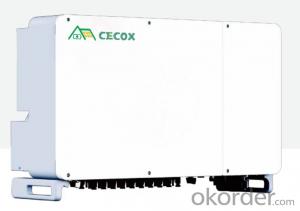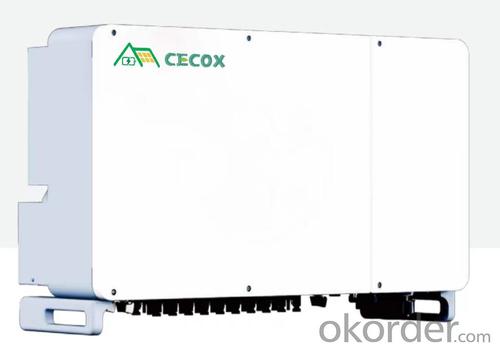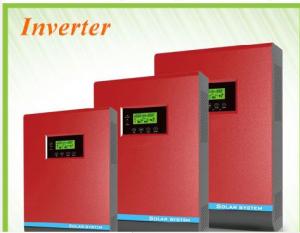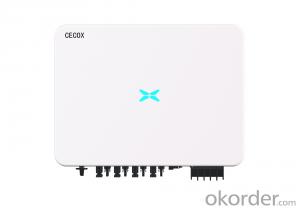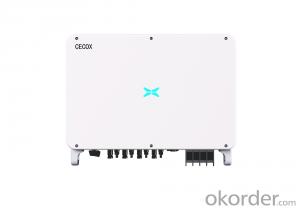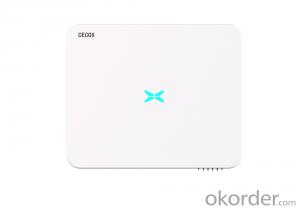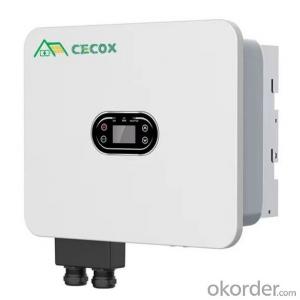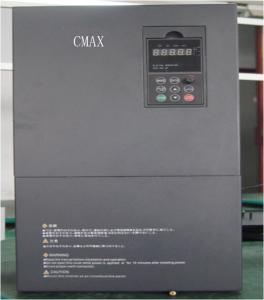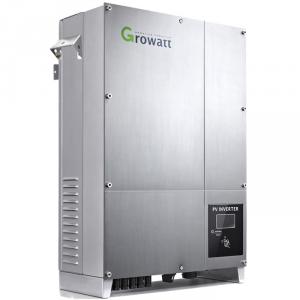100-136kW Three Phase On-Grid Solar Inverter Package
- Loading Port:
- China main port
- Payment Terms:
- TT OR LC
- Min Order Qty:
- 1 unit
- Supply Capability:
- 50 unit/month
OKorder Service Pledge
OKorder Financial Service
You Might Also Like
Specification
Efficient power generation, higher returns
9-12 MPPT, single tracking accuracy is high, dynamic response speed is fast, higher power generation
1.5x DC supermatch
Maximum efficiency %, wide voltage range (180-1000V), early start and late stop, more durable power generation
Suitable for high current components
Intelligent protection operation and maintenance is simple
Intelligent IV diagnosis can accurately locate string faults and proactively find problems
Support fault recording, real-time observation and recording of inverter AC voltage and current waveform, quickly locate problems
Support RS485 (WiFi/DRM/ Bluetooth optional), mobile phone/computer intelligent monitoring, anytime and anywhere more convenient operation
Safe and reliable, comprehensive Warranty
IP66 high protection, support outdoor installation
AC-DC secondary lightning protection, actively eliminate lightning hazards
DC arc detection (AFCI) function is optional, accurately distinguish arc signal, fast shutdown, avoid fire
IEC/EN 62109-1/2, IEC/EN 61000-6-1/3, IEC/EN 61000-6-2/4, EN50549, IEC61727/IEC62116, CEI 0-21/CEI 0-16, C10/C11, VDE 4105, VDE 0124, G99, RD244, UNE217001, UNE217002, NC RfG, TOR Erzeuger, NRS097-2-1, NB/T 32004
Night power consumption <1W
Size:1050 x 660 x 330 mm
Weight:95/98/101kg(100KW/110KW/136KW)
Quality Warranty:5-10 years
- Q: How do you calculate the efficiency loss due to temperature for a solar inverter?
- To calculate the efficiency loss due to temperature for a solar inverter, you would typically refer to the manufacturer's specifications and documentation. The efficiency loss can be determined by comparing the inverter's rated efficiency at a specific temperature (usually 25 degrees Celsius) to its efficiency at the desired operating temperature. The manufacturer may provide a temperature coefficient, which represents the percentage decrease in efficiency for every degree increase in temperature. By multiplying the temperature coefficient with the difference between the desired operating temperature and the reference temperature, you can estimate the efficiency loss due to temperature.
- Q: How does a solar inverter affect the overall system performance in different weather conditions?
- A solar inverter plays a crucial role in the overall system performance of a solar energy system in different weather conditions. In sunny weather, the solar inverter efficiently converts the direct current (DC) generated by the solar panels into alternating current (AC), optimizing power output. However, in cloudy or overcast conditions, the solar inverter mitigates the impact of reduced sunlight by employing maximum power point tracking (MPPT) technology, ensuring that the system operates at its peak efficiency and extracts the maximum available energy from the panels. Additionally, advanced inverters can also provide grid stabilization during extreme weather events, such as storms or voltage fluctuations, safeguarding the system and enhancing its performance and reliability. Overall, a well-functioning solar inverter is essential for maximizing energy production and maintaining optimal system performance in varying weather conditions.
- Q: Can a solar inverter be used with a solar-powered greenhouse system?
- Yes, a solar inverter can be used with a solar-powered greenhouse system. A solar inverter converts the direct current (DC) generated by solar panels into alternating current (AC) that can be used to power electrical devices in the greenhouse system. This allows for efficient utilization of solar energy for various applications such as lighting, ventilation, irrigation, and temperature control within the greenhouse.
- Q: What are the potential risks of overheating a solar inverter?
- The potential risks of overheating a solar inverter include reduced efficiency and performance, increased wear and tear on components, shortened lifespan of the inverter, potential damage to internal circuitry, and even the risk of fire.
- Q: Can a solar inverter be used with solar-powered agricultural equipment?
- Yes, a solar inverter can be used with solar-powered agricultural equipment. A solar inverter is an essential component of a solar power system as it converts the direct current (DC) electricity generated by solar panels into usable alternating current (AC) electricity. This AC electricity can then power various agricultural equipment, such as irrigation systems, pumps, and machinery, allowing them to operate efficiently using clean and renewable solar energy.
- Q: How does a solar inverter handle shading or partial panel obstructions?
- A solar inverter handles shading or partial panel obstructions by employing a technique known as Maximum Power Point Tracking (MPPT). MPPT enables the inverter to optimize the output power of the solar panels by constantly adjusting the operating voltage and current. When shading or obstruction occurs, the inverter automatically detects the affected panels and adjusts their output to minimize the impact on the overall system performance. This ensures that the system continues to generate as much power as possible, even in shaded conditions.
- Q: Are solar inverters weatherproof?
- Yes, solar inverters are typically weatherproof and designed to withstand different weather conditions such as rain, snow, and heat. However, it is essential to ensure that the solar inverter is installed correctly and protected from extreme weather conditions to maintain its performance and longevity.
- Q: Are there any noise or vibration concerns associated with solar inverters?
- Solar inverters can cause noise and vibration problems, but the severity of these issues depends on the specific make and model of the inverter. Some inverters may emit a gentle humming or buzzing sound, which is generally considered normal. However, if the noise becomes excessively loud or disruptive, it may indicate a malfunctioning or poorly installed inverter. Likewise, vibrations can occur in solar inverters, especially if they are not properly secured or mounted. These vibrations can potentially result in additional noise or even lead to damage if not addressed. To mitigate these concerns, it is essential to follow proper installation and maintenance practices, such as securely fastening the inverter and regularly inspecting for loose components or abnormal vibrations. It's worth noting that advancements in technology have resulted in the development of quieter and more efficient solar inverters. When selecting an inverter for a solar system, it is advisable to research and choose a reputable brand known for producing inverters with minimal noise and vibration issues. Additionally, consulting with a professional solar installer can provide valuable insights and recommendations to ensure a smooth and quiet operation of the solar inverter.
- Q: What is the role of fault ride-through capability in a solar inverter?
- The role of fault ride-through capability in a solar inverter is to ensure the stable and uninterrupted operation of the solar power system during grid disturbances or faults. It allows the inverter to remain connected to the grid and continue supplying power, even when there are short-term voltage dips or interruptions in the grid. This capability helps in maintaining grid stability and reliability while maximizing the energy generation from the solar panels.
- Q: How does a three-phase solar inverter differ from a single-phase inverter?
- A three-phase solar inverter differs from a single-phase inverter in terms of the number of input and output phases it can handle. While a single-phase inverter can only handle a single-phase input and output, a three-phase inverter is designed to handle three-phase input and output. This allows for a more efficient and balanced distribution of power in three-phase electrical systems, making three-phase inverters suitable for larger solar installations or commercial applications.
Send your message to us
100-136kW Three Phase On-Grid Solar Inverter Package
- Loading Port:
- China main port
- Payment Terms:
- TT OR LC
- Min Order Qty:
- 1 unit
- Supply Capability:
- 50 unit/month
OKorder Service Pledge
OKorder Financial Service
Similar products
Hot products
Hot Searches
Related keywords
